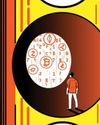For some mining companies’ revenues, the trade war is looking like a phony war

The price of iron ore and coal, two of the world’s most widely used minerals, has been rising since mid-2018 even as the US and China ratchet up tariffs. UBS, an investment bank, had been expecting the benchmark price for high-grade iron ore to slip back from $72 a tonne to $68 a tonne rather than rise to $76 a tonne, which is what’s happened.
The price increase was good enough for UBS to tell clients with an eye on iron ore mining companies to “watch for earnings upgrades thanks to strong spot [short-term] prices”. So although tentativeness or anxiety about the macroeconomy in an era of trade nationalism is cited in some quarters for recent price dips in global staples such as oil, the commodity picture in Asia-Pacific has contrasts.
What appears to be driving the rise in iron ore is Chinese demand for construction-grade steel used as “rebar”, or the reinforcing rods which strengthen concrete in high-rise buildings and civil works such as bridges. With exports of manufactured goods to the US shrinking, the Chinese government is falling back on a well-used plan of bolstering the country’s economy by encouraging domestic construction.
Denne historien er fra February 15, 2019-utgaven av Forbes India.
Start din 7-dagers gratis prøveperiode på Magzter GOLD for å få tilgang til tusenvis av utvalgte premiumhistorier og 9000+ magasiner og aviser.
Allerede abonnent ? Logg på
Denne historien er fra February 15, 2019-utgaven av Forbes India.
Start din 7-dagers gratis prøveperiode på Magzter GOLD for å få tilgang til tusenvis av utvalgte premiumhistorier og 9000+ magasiner og aviser.
Allerede abonnent? Logg på

Home-Cooked Meal Is Now Greatly Valued
The pandemic has also brought with it an improved focus on hygiene, use of technology in dining, rise of cloud kitchens and resurgence in popularity of Indian ingredients

Paytm 3.0 - Reaching Near Breakeven In Two Years
As of 2020, Vijay Shekhar Sharma’s super app for financial services had run up losses in thousands of crores. Now, as digital payments gets yet another boost courtesy Covid-19, he’s hopeful of reaching near breakeven in two years

THE PANDEMIC HAS CAUSED WOMEN GREATER LABOUR PAIN
Covid-19 has shown that women are more likely to face the brunt of job losses than men, and find fewer opportunities when they want to resume. That apart, several have to deal with increased hours of unpaid work at home and even domestic abuse

LEADERSHIP WILL BE ABOUT SEEING THE BIGGER PICTURE
Leaders must not only guard their teams first during a crisis, but also deal with stakeholders with respect and dignity. And apart from pursuing business goals, they should remain committed to our planet and the environment

PHILANTHROPY SHOULD BE HUMBLE, BUT NOT MODEST
Apart from building a flexible and resilient framework for the future, philanthropists, civil society and the government must work in tandem so that every rupee is absorbed on the ground

INTEGRATED HEALTH CARE, TECH WILL DISRUPT SECTOR
While clinical research will get a boost, having a skilled workforce and public spending on health care will be challenges in the near term

DIGITALISATION WILL HELP IN VALUE CREATION
As the pandemic brings technology and innovation to the core of business and daily life, the next decade will see about 150 million digital-first families in India

Industry 4.0: Climate Revolution?
Augmenting sustainability alongside digital capabilities is an economic, competitive and global opportunity for India’s businesses, but regulations need to reflect intent

EV Dream Still Miles Away
Electric vehicles have remained a buzzword in India for years. But not much has moved on ground due to high upfront costs, range anxiety and charging infrastructure

Living Waters
A virus has caused us to scramble for oxygen but our chokehold on the environment is slowly strangling the very waters that breathe life into us. The virus is a timely reminder: We are merely consumers, not producers of life’s breath on this planet